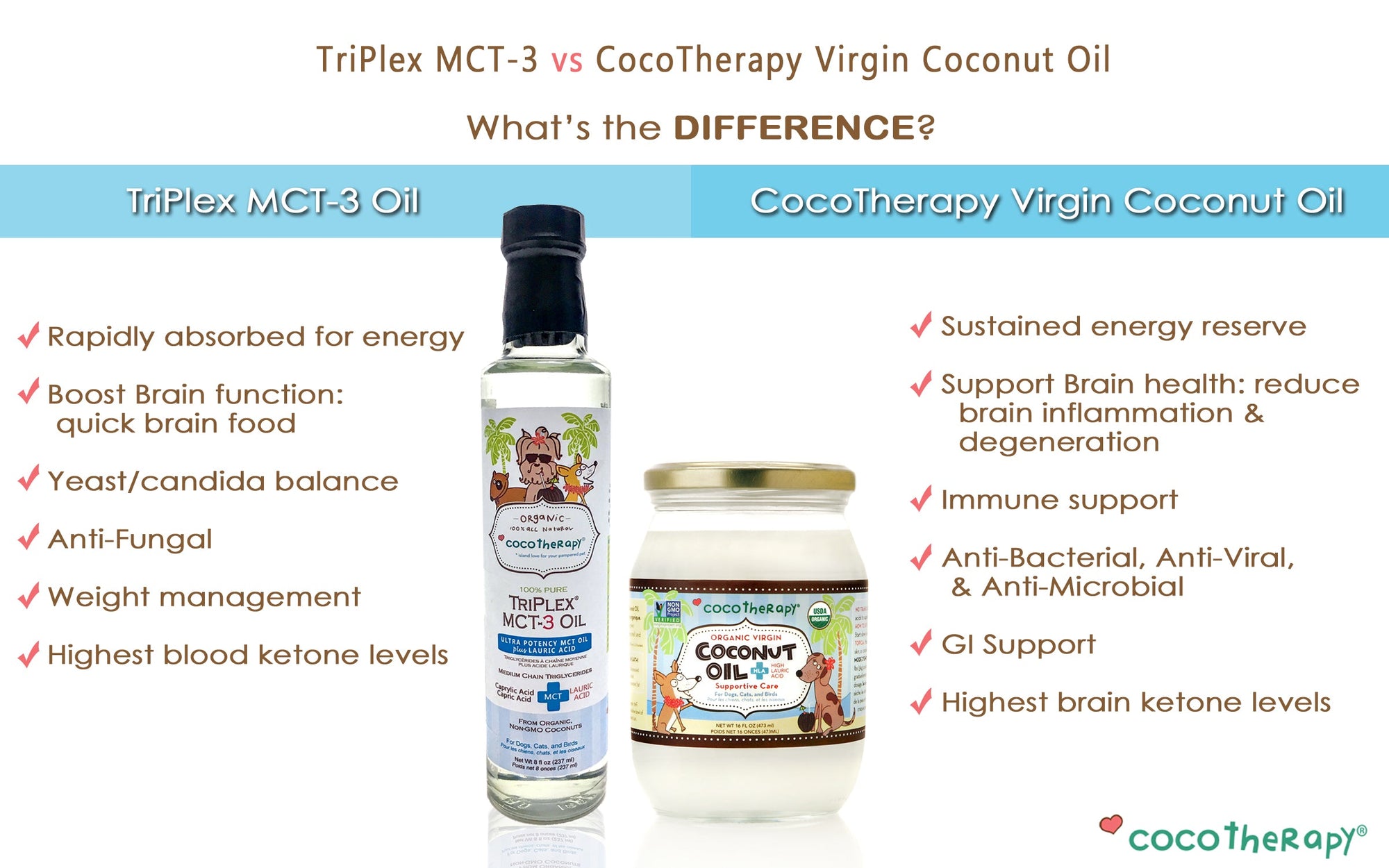Recently, CocoTherapy CEO & co-founder, Charisa Antigua conducted an in-depth interview with world-renowned lipids expert, Dr. Bruce Fife, C.N., N.D. One of the topics they discussed was the properties of different types of saturated fats. In today's post, we'll dive into this subject a little more deeply and explore whether or not all saturated fats are the same.
What Are Saturated Fats?
All fats (lipids) are made of triglycerides – three individual molecules called fatty acids attached to a glycerol molecule. Fatty acids are made of chains of carbon atoms and can be distinguished by the length of their carbon chains. When a chain of carbon atoms is fully connected with hydrogen atoms, it is considered a saturated fat, or “saturated” with hydrogen atoms.
The carbon atoms in a fat molecule are joined either by a single bond or a double bond, depending on whether or not there is a hydrogen atom attached to it. Because saturated fats are fully loaded with a pair of hydrogen atoms, they have only single bonds in their carbon chain, making them more stable. Thanks to their chemical composition, saturated fats tend to be solid at room temperature. They are mainly found in meat, dairy, eggs, and some tropical plant oils, including palm oil and coconut oil.
Saturated Fatty Acids
Saturated fatty acids can be grouped into three main categories: long-chain, medium-chain, and short-chain fatty acids. Both the length of the carbon chain of the fatty acid and the degree of hydrogen saturation determine the fatty acid’s properties and their effects on health. In this section of the post, we'll take a look at some of the most common long-, medium-, and short-chain fatty acids. We'll also explore their effects on health.

Long-Chain Fatty Acids
Long-chain fatty acids (LCFAs) have chains of 13-21 carbon atoms. The most common dietary LCFAs are palmitic acid, myristic acid, and stearic acid. Because of their long carbon chain length, LCFAs are difficult for the body to break down. This means that they can put a lot of strain on the digestive system and internal organs such as the liver and pancreas. LCFAs are also often stored as fat, increasing the risk of health problems such as obesity and heart disease.
Palmitic acid is 16 carbon atoms long. It is the most common dietary saturated fatty acid, and is found in foods such as butter, red meat, full-fat cheese, palm oil, and corn oil. Myristic acid is a LCFA that's 14 carbon atoms long. Dietary sources include butter, cream, and nutmeg. Stearic acid is composed of 18 carbon atoms, and is mostly found in animal fat.
Research has shown that palmitic acid and myristic acid raise levels of total cholesterol and LDL (bad) cholesterol. For this reason, overconsumption of these LCFAs has been linked with a higher risk of cardiovascular disease and other serious health conditions such as pancreatic cancer. By comparison, stearic acid has been shown to have a neutral effect on LDL cholesterol levels. Despite being an LCFA, it is not thought to increase the risk of cardiovascular disease.
Medium-Chain Fatty Acids
Medium-chain fatty acids (MCFAs) have chains of 6-12 carbon atoms. Some of the most common MCFAs in this group are lauric acid, capric acid, caprylic acid, and caproic acid. Unlike palmitic acid and myristic acid (the saturated fat culprits) these fatty acids do not increase the risk of cardiovascular disease. In fact, they have been proven to benefit overall health thanks to the way they are processed by the body.
Lauric acid is 12 carbon atoms long. The most abundant natural source of lauric acid is coconut oil. Capric acid is an MCFA that's 10 carbon atoms long. It is mostly found in coconut oil and palm oil. Caprylic acid is composed of 8 carbon atoms. It is found in coconut oil, palm oil, and the milk of various mammals. Finally, caproic acid has a chain of 6 carbon atoms. It occurs naturally in plant and animal fats and oils, including coconut oil.
Unlike LCFAs, MCFAs are broken down rapidly thanks to their shorter chain length. When consumed, they go straight to the liver where they can be used as an efficient fuel source or turned into ketones. In his recent book, Keto Cycling, lipids expert Dr. Bruce Fife, C.N., N.D., explains the power of ketones:
"Ketones actually provide a more concentrated and efficient source of energy than glucose and have been described as our body's 'super fuel,' producing energy more efficiently than either glucose or fat. It is like putting high-performance gasoline into the tank of your car – the engine runs more smoothly and cleanly, with better fuel efficiency. Ketones have a similar effect on the brain and other organs in the body."
Short-Chain Fatty Acids
Short-chain fatty acids (SCFAs) contain fewer than 6 carbon atoms. Some of the most common are butyric acid (4 carbon atoms long), propionic acid (3 carbon atoms long), and acetic acid (2 carbon atoms long). SCFAs are the end products of intestinal microbial fermentation of fiber. This means that, unlike LCFAs and MCFAs, they are mainly produced by the body.
Research has shown that SCFAs have an important role to play in supporting gut health. They are also thought to promote overall health and decrease the risk of inflammatory diseases such as obesity, heart disease, and diabetes. A diet high in fiber-rich foods such as fruits and vegetables is known to aid production of SCFAs.
Saturated Fatty Acids in Coconut Oil
Therapeutic-grade coconut oil such as CocoTherapy Organic Virgin Coconut Oil contains high levels of beneficial MCFAs. The most abundant MCFA in coconut oil is the "super ingredient" lauric acid. Our oil has a minimum lauric acid content of 53%. Lauric acid has antibacterial, antimicrobial, and antiviral properties. It also provides a wide range of health benefits for people and pets. These include boosting the immune system, protecting the skin and coat, and supporting gastrointestinal health.
CocoTherapy Organic Virgin Coconut Oil also contains capric acid (min 7%) and caprylic acid (min 12%). These MCFAs are known to have powerful antifungal properties and support overall health. As we mentioned earlier, the MCFAs in coconut oil also can also be used by the body as an efficient fuel source or turned into ketones.
In order to enjoy the health benefits of coconut oil, always remember to choose a high-quality, therapeutic-grade oil such as CocoTherapy Organic Virgin Coconut Oil. Our oil is sourced from our USDA-certified organic family farm in the Philippines, and carefully manufactured in our own facility. In addition, always be sure to feed your pet coconut oil in moderation as part of a balanced, species-appropriate diet.
Want to learn more about the health benefits of CocoTherapy Organic Virgin Coconut Oil? Check out our previous post, 11 Health Benefits of Coconut Oil for Pets.



